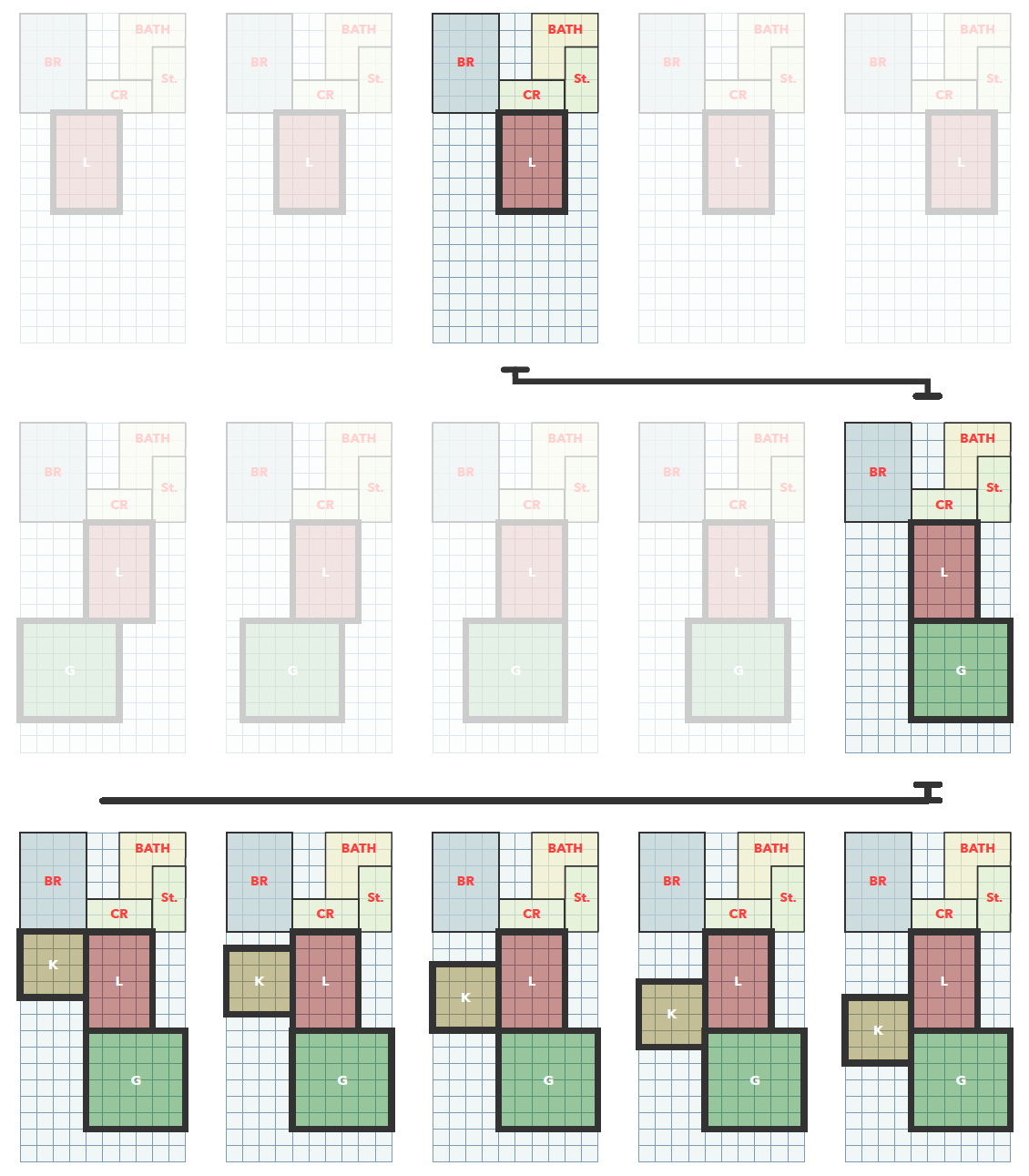Performatively Shaped, Traditionally Inspired Contemporary Houses: The Case of Courtyard Houses in Baghdad
Abstract
This paper presents a computational approach to generate and optimize traditionally inspired housing solutions in the city of Baghdad. The study first presents a computational method to explore the possible design spaces of the houses. Then the study moves from massive customization to mass customization and presents a genetic algorithm to optimize design solutions through narrowing down the possible design space based on a performative fitness function. This study achieved the outcome that the semi-traditional, hybrid, house model is the best model for use in Iraq due to the severe environmental conditions represented by extreme temperatures and harsh solar radiation through the contribution of these models to reducing the applied solar radiation and thus reducing the heat gained in the home spaces.
Presentation
Conference Paper
Keywords
Courtyard Houses, Hybrid House, Building Energy Performance, Optimization Strategy, Parametric Design
Reference
DOI: https://doi.org/10.47330/DCIO.2021.WJOD8510
Bibliography
- Al-Azzawi, S.H.A. (1984) A descriptive, analytical and comparative study of traditional courtyard houses and modern non-courtyard houses in Baghdad:(in the context of urban design in the hot-dry climates of the sub-tropics) (Doctoral dissertation, University College London (University of London)). p5.
- Bentley, Peter. "An introduction to evolutionary design by computers." Evolutionary design by computers (1999): 1-73.
- Deleuze, G. (1994). Difference and repetition Columbia University Press.
- Department of State, Iraq Weekly Status Report,. Accessed at: https://2001-2009.state.gov/p/nea/rls/rpt/iraqstatus/c26648.htm
- Duarte, José Pinto. Customizing mass housing: a discursive grammar for Siza's Malagueira houses. Diss. Massachusetts Institute of Technology, 2001.
- Edward Allen, Aia, and Edward Allen. How buildings work: the natural order of architecture. Oxford University Press, 2005.
- Flemming, Ulrich. "More than the sum of parts: the grammar of Queen Anne houses." Environment and Planning B: Planning and Design 14.3 (1987): 323-350.
- Harada, Tomohiro, and Enrique Alba. "Parallel genetic algorithms: a useful survey." ACM Computing Surveys (CSUR) 53.4 (2020): 1-39.
- Hillier, Bill, Julienne Hanson, and Heather Graham. "Ideas are in things: an application of the space syntax method to discovering house genotypes." *Environment and Planning B: planning and design 14.4 (1987): 363-385.
- Kolarevic, Branko, and José Pinto Duarte, eds. Mass customization and design democratization. Routledge, 2018.
- Koning, Hank, and Julie Eizenberg. "The language of the prairie: Frank Lloyd Wright's prairie houses." Environment and planning B: planning and design 8.3 (1981): 295-323
- Lynn, G., & Kelly, T. (1999). Animate form Princeton Architectural Press New York.
- Shiffman, Daniel, Shannon Fry, and Zannah Marsh. The nature of code. D. Shiffman, 2012.
- Stiny, G., & Mitchell, W. J. (1978). The Palladian grammar.5 (1), 5-18.
- Touloupaki, Eleftheria, and Theodoros Theodosiou. 2017. “Performance Simulation Integrated in Parametric 3D Modeling as a Method for Early Stage *Design Optimization—A Review.” Energies 10 (5): 637. https://doi.org/10.3390/en10050637.

